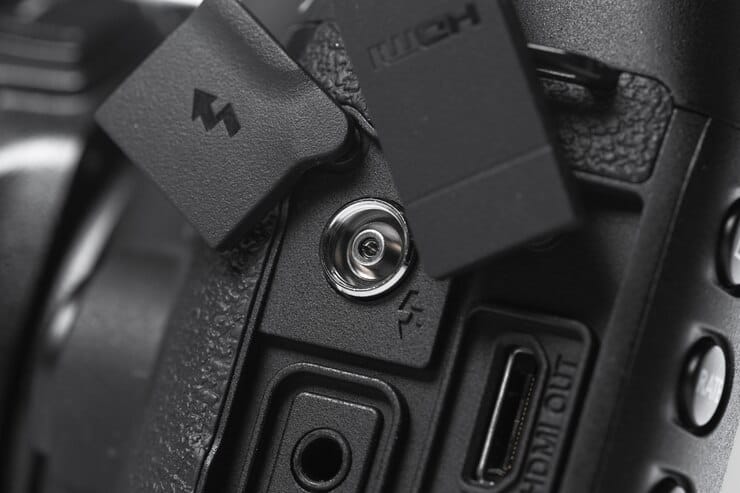The Fujifilm X-Pro2 is a powerful camera that offers an incredible level of customization, allowing photographers to fine-tune settings for any situation. However, navigating its extensive menu and controls can be intimidating for new users. In this guide, we’ll break down the essential settings and show you how to optimize the X-Pro2 for various photography styles, from street photography to portraiture. By the end, you’ll be equipped to unleash the full potential of this remarkable camera.
Exploring the X-Pro2 Menu System
The X-Pro2’s menu system is where most of the magic happens. Understanding how to navigate and adjust key options is the first step in mastering the camera.
- Quick Menu (Q): The Quick Menu provides instant access to commonly used settings, such as ISO, white balance, and film simulation modes.
- Customizable My Menu: Tailor this menu to include your most-used settings for faster adjustments.
- Function Buttons: Assign specific functions like focus modes or drive settings to the customizable buttons for a smoother workflow.
Pro Tip: Familiarize yourself with the button layout to access critical settings without taking your eyes off the viewfinder.
Adjusting Key Exposure Settings

Understanding exposure is critical to mastering the X-Pro2. The camera offers a blend of manual and automatic controls for perfecting your shots.
Shutter Speed and ISO
- Shutter Speed Dial: Found on the top plate, this physical dial lets you quickly adjust shutter speed.
- ISO Dial: Integrated into the shutter speed dial, it provides convenient ISO adjustments without diving into the menu.
- Auto ISO Settings: Set minimum and maximum ISO values and a shutter speed threshold for flexibility in changing light conditions.
Aperture Control
- Lens-Based Aperture Ring: Many Fujifilm lenses come with a physical aperture ring, making adjustments intuitive and precise.
Pro Tip: Use Auto ISO in manual mode to balance exposure dynamically while controlling aperture and shutter speed.
Utilizing Film Simulation Modes
Fujifilm’s film simulation modes are one of the X-Pro2’s standout features, offering unique color profiles and tonal effects.
- Provia: A standard profile for natural-looking colors.
- Velvia: Vibrant and saturated, ideal for landscapes.
- Classic Chrome: Muted tones for a cinematic feel.
- Acros: A high-contrast monochrome mode with beautiful tonal gradations.
Pro Tip: Experiment with the film simulation bracketing mode to capture the same scene with three different profiles, helping you choose the best look later.
Fine-Tuning Focus Settings
The X-Pro2 offers advanced autofocus (AF) capabilities and manual focus options to suit a variety of shooting scenarios.
Autofocus Modes
- Single AF (AF-S): Perfect for stationary subjects.
- Continuous AF (AF-C): Tracks moving subjects with ease.
- Manual Focus (MF): For complete control over focus.
Focus Area Selection
- Use the joystick to select focus points quickly.
- Adjust the size of the focus area to suit your subject.
Pro Tip: Enable focus peaking in manual mode to highlight areas of sharp focus, ensuring precision.
Mastering White Balance and Color Settings

Accurate white balance ensures that your colors look natural, while color settings can add creative flair to your shots.
- White Balance Presets: Choose from options like Daylight, Shade, and Tungsten to match your shooting conditions.
- Custom White Balance: Manually set white balance for challenging lighting situations.
- Color Settings: Adjust sharpness, shadow tones, and highlights to fine-tune your images.
Pro Tip: Use the Custom White Balance setting to neutralize color casts in mixed lighting environments.
Configuring Drive and Shooting Modes
The X-Pro2’s drive modes allow you to capture fast-moving action or experiment with creative techniques.
- Single Shot Mode: Best for deliberate, well-composed shots.
- Continuous Shooting: Capture up to 8 frames per second for action photography.
- Bracketing: Take multiple exposures to create HDR images or experiment with exposure levels.
Pro Tip: Use the electronic shutter for silent shooting in sensitive environments.
Leveraging Custom Settings for Efficiency

Save time in the field by using the X-Pro2’s custom settings feature.
- Custom Shooting Profiles: Save configurations for different scenarios, such as low light or fast action.
- Customizable Quick Menu: Include settings you frequently adjust for quick access.
Pro Tip: Label your custom profiles for easy identification, like “Portrait” or “Street.”
Conclusion
Mastering the Fujifilm X-Pro2 settings may seem daunting at first, but with consistent practice and experimentation, you’ll soon handle it with ease. From exposure settings to focus modes and film simulations, the X-Pro2 is packed with features that cater to various styles of photography. Dive into its menu, experiment with settings, and don’t be afraid to make mistakes — that’s the best way to learn and grow as a photographer.
FAQs
What is the best film simulation mode for portraits?
Provia and Astia are excellent choices for portraits, offering natural skin tones and soft color reproduction.
Can I save custom settings on the X-Pro2?
Yes, you can save custom settings for different shooting scenarios, making it easier to switch on the fly.
How do I enable focus peaking on the X-Pro2?
Go to the AF/MF menu and turn on focus peaking. You can also adjust the color and intensity of the peaking highlights.
What is the difference between Single and Continuous AF?
Single AF locks focus on a stationary subject, while Continuous AF tracks moving subjects dynamically.
How do I access the Quick Menu on the X-Pro2?
Press the “Q” button on the back of the camera to open the Quick Menu for fast adjustments.
Is the X-Pro2 suitable for beginners?
While it has a learning curve, the X-Pro2 is beginner-friendly once you master its intuitive controls and customizable settings.






